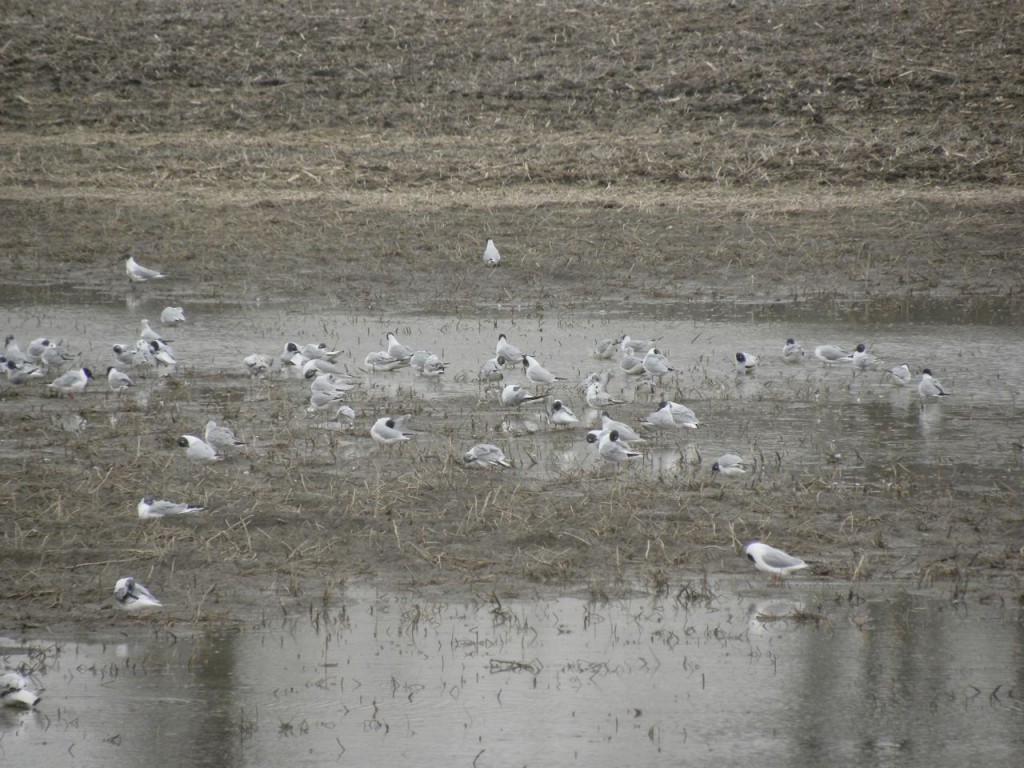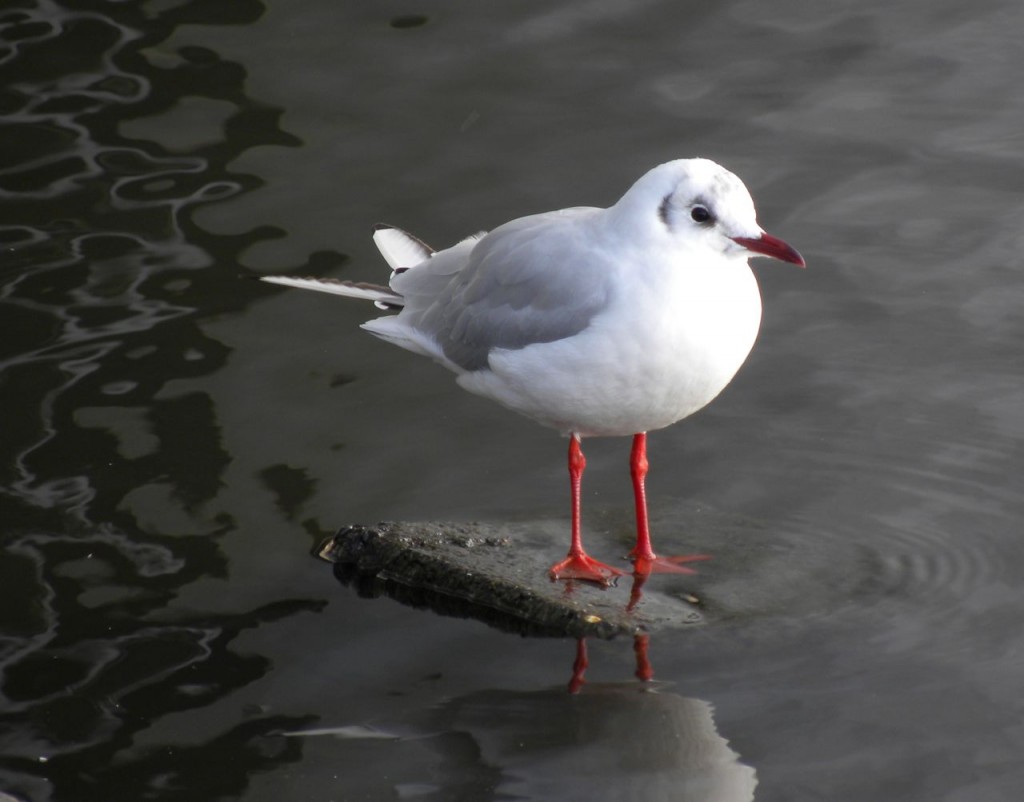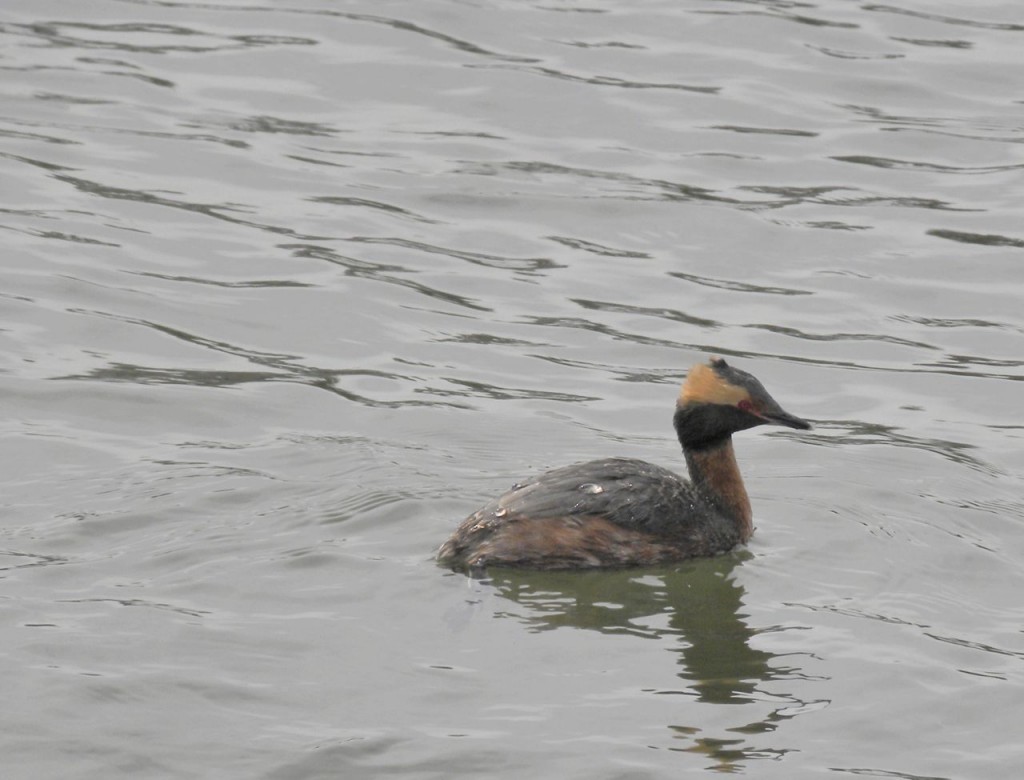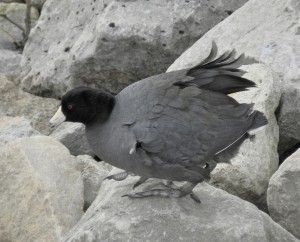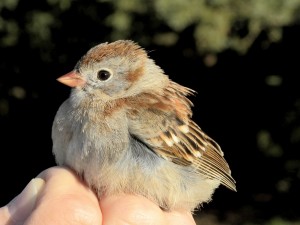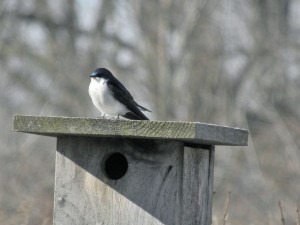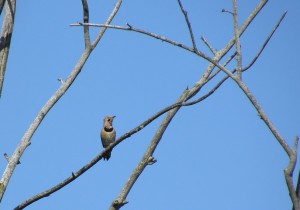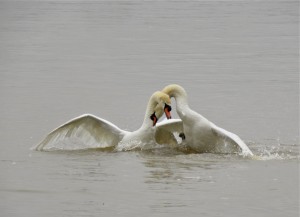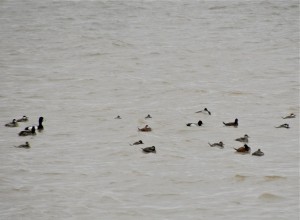22nd April 2013. Ruthven Park, Cayuga ON. Today the sun came out to validate the efforts of countless birds that have arrived expecting a new season of plenty. I spent the morning at the bird observatory and took almost three hours to complete the daily census, a task I can usually do in an hour and a half. I wanted to find as many species as possible, and besides, there was a group of Grade 4 kids swarming the banding lab; I find that I’m not much into other peoples’ juvenile offspring anymore.
Talking of offspring, the census was full of sightings which, to an atlasser, would qualify as breeding evidence: A Red-tailed Hawk at its twiggy, platform nest, two Eastern Phoebes evaluating a deep, overhanging porch as a possible nest site, a pair of Belted Kingfishers excavating a hole in the riverbank, the amorously entangled courtship of two Downy Woodpeckers and a mother Raccoon foraging near her den and from which came anxious purring sounds.
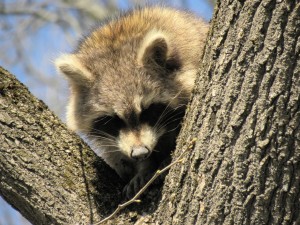
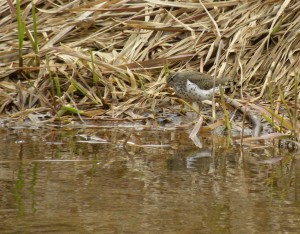
New this year included my Bird of the Day, a Spotted Sandpiper. Standing by the river, scanning the far bank, watching the Belted Kingfishers and trying to keep a mental note of species calling and singing, I heard a tiny distant weet–weet-weet, the unmistakable sound of a Spotted Sandpiper. I looked for it along the downstream waters-edge expecting to see it picking for food, but instead it was flying towards me. It passed not ten yards away and kept on heading upstream. Who knows how much further it has to go before finding its summer home, Spotted Sandpipers breed throughout Ontario as far as the shores of Hudson Bay. They are the signature shorebird of wherever there’s water.
I heard my first-of-the-year House Wren, watched about 70 Bonaparte’s Gulls wheeling around a flooded field across the river, enjoyed Ruby-crowned and Golden-crowned Kinglets and caught sight of a handful of Yellow-rumped Warblers high in the tops of some White Oaks.
Many times I stood quietly watching and listening, and reveled in the sun’s warmth. There’s more of that to come, otherwise why would all these birds be showing up.
